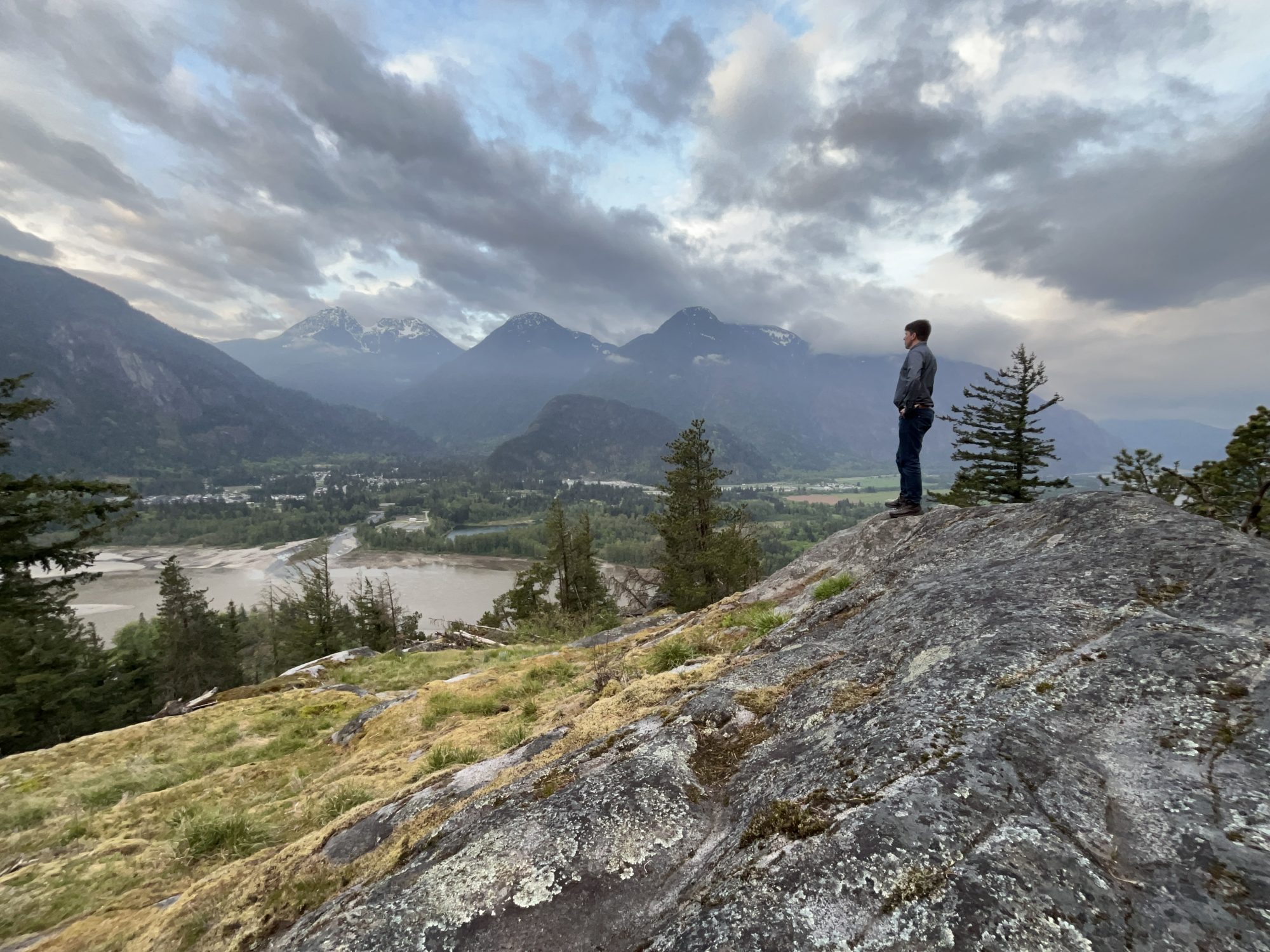From recovery to resilience: on-the-ground stories of climate action across the Southern Interior
Over the past decade, the Southern Interior has been at the forefront of climate emergencies in British Columbia. The communities of Lytton, West Kelowna, Monte Lake, and Merritt have experienced devastating floods, wildfires, and heat waves. What were once considered once-in-a-generation events have become alarmingly routine. On a recent tour of the region, I had the opportunity to connect with partners we work with at PICS, community organizations, and elected officials to better understand how people are navigating challenges and building resilience in the face of a changing climate.
The Lytton fire four years on — what can we learn?
The road from Hope to Lytton weaves its way up the Fraser River Canyon on the Trans-Canada Highway. As I began the drive, I was reminded that the Fraser River has been at the heart of the territories of the Stó:lo, Nlaka’pamux, and Tŝilhqot’in Nations for millennia—a place of connectivity and abundance, but also of rugged energy and steep terrain.
As I arrived in Lytton, I was greeted by Mayor Denise O’Connor in the village’s temporary office, one of many improvised spaces serving a community still in recovery. In 2021, 90 per cent of Lytton, including the original village hall, was destroyed by wildfire. Mayor O’Connor offered me a tour of the community, where reconstruction has followed an uneven pace. As we drove through the empty streets, she explained recovery has been slow, and that “building back better” remains an elusive goal.
Many residents, particularly Elders, seniors, and those without insurance, have not returned. Legal disputes with insurers, the high cost of rebuilding, and the trauma of displacement have taken a heavy toll. As of Spring 2025, 18 homes were under construction, but no commercial buildings had yet been confirmed.
And yet, Mayor O’Connor remains committed to Lytton’s future. She says she believes, as do other local leaders, that Lytton’s story holds important lessons, not only about the devastating pace of climate change, but in the systemic barriers communities face in trying to recover.
Lytton’s experience is a powerful reminder of what’s at stake—and how climate impacts can overwhelm even the most tight-knit communities when recovery systems fall short. But just north, the story shifts toward proactive solutions and long-term resilience.
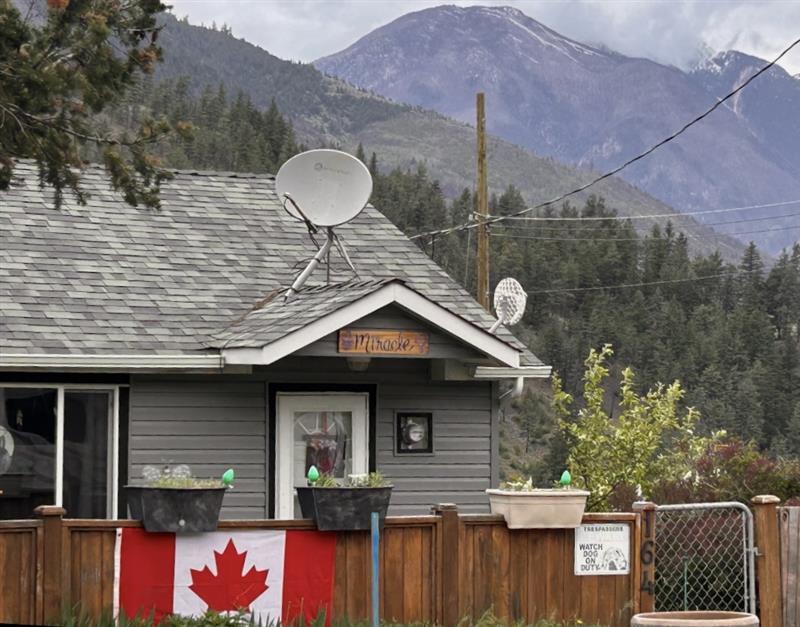

In Lillooet, First Nation communities take the lead on climate action
Continuing my journey up the Fraser Canyon, I arrived in Lillooet to connect with two PICS-funded, First Nations-led climate projects. Increasingly, First Nation communities are leading the way in climate action, and this is no different in the Southern Interior of B.C.
In Xaxl’ip, I was introduced to Chief Darrell Bob Sr. and met with the hydrogen project team to discuss the community’s plan for a green hydrogen production facility. Green hydrogen is made by combining electricity and water – both abundant in Xaxl’ip territory. Once green hydrogen fuel is created, it can be sold as a 100 per cent fossil-fuel-free replacement in many commercial and industrial applications.
“Hydrogen fuel is now a well-established fuel in many places in the world. In British Columbia, we have a tremendous opportunity to catch up and develop green hydrogen as we decarbonize our society.”
– Deanna Ambrose, Salish Elements
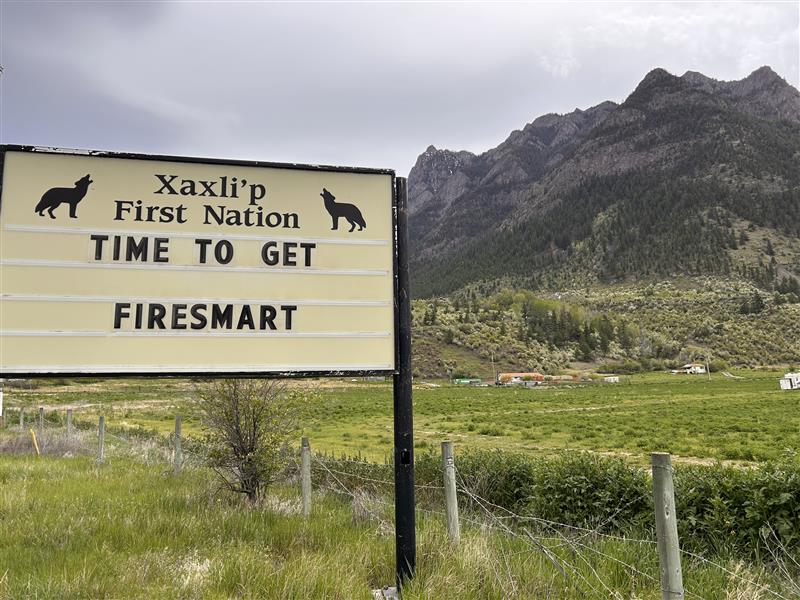

Next, I travelled across the river and further up the canyon, where I met the Ancestral Food System team at Xwísten First Nation. The Nation recently secured a PICS Climate Internship grant, which allowed them to hire a summer intern. Taylor Griffiths has been living and working in the community, supporting a range of initiatives including creating a local weather database; researching the effects of climate change on traditional plants; harvesting traditional foods in and around the community; and developing an annual harvesting guide for traditional foods and medicines.
When I visited, the team was hard at work building a community garden and developing the community farm, while preparing for forest-based learning activities through the summer.
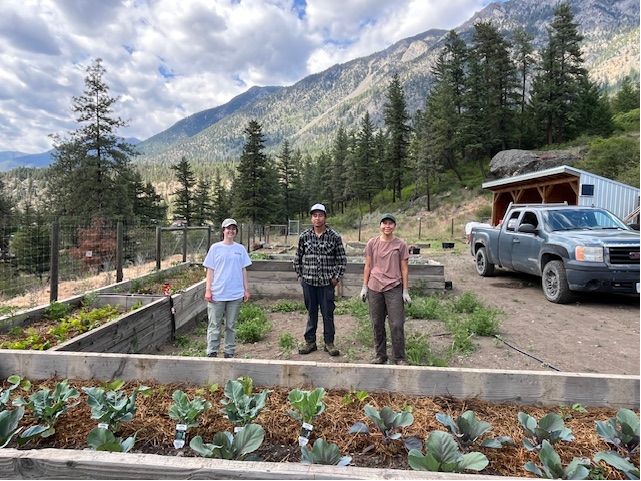
“The whole area around Lillooet used to be much more food self-sufficient up until a generation ago. With the way the world is going, people want to re-establish food abundance in the territory while understanding how climate trends will impact food production.”
– Matthew Davidson, Agriculture/Food Systems Coordinator, Xwísten First Nation
Photo: The Xwísten team in the community garden, including PICS intern Taylor Griffiths on the far left.
These projects in the Lillooet region show how climate leadership rooted in Indigenous Knowledges and community priorities can generate both innovation and local resilience.
Re-thinking food and health systems in Kamloops and Kelowna
Leaving the Fraser Canyon, I had the opportunity to learn about two other PICS-supported projects in the Southern Interior that are also advancing climate action through food systems and community wellbeing.
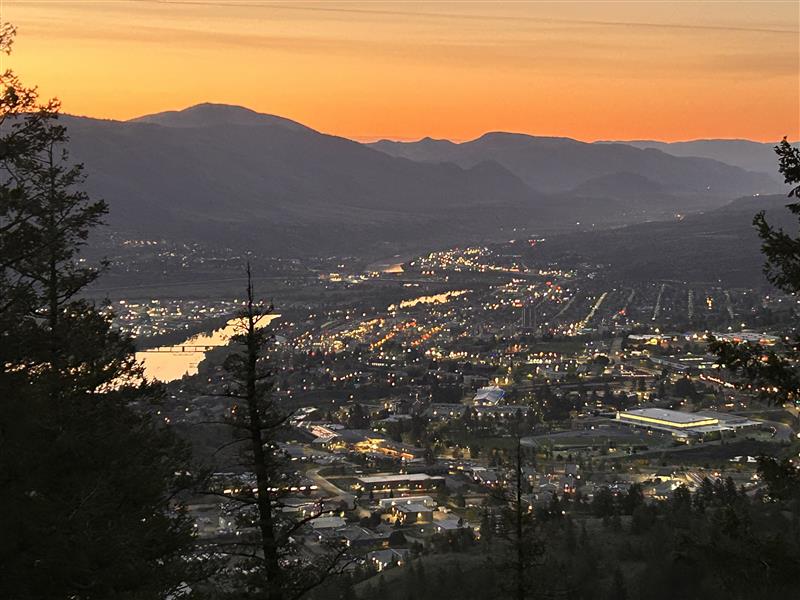
My next stop was the Kamloops Food Policy Council (KFPC), where a PICS Climate Intern was brought on board to support KFPC’s five-year assessment research project. The research will evaluate KFPC’s impact on local food access in the Kamloops region while exploring how regionalizing the local food system can enhance sustainability, reduce emissions, preserve biodiversity, and strengthen resilience in the face of climate-related disruptions, such as wildfires.
As Co-Executive Directors Saeideh (Sadie) Hejazi and Kent Fawcett explained, demand for local food programs is rising— driven not only by challenges with food affordability , but by growing awareness of how trade, tariffs, and climate change can affect the global food system.
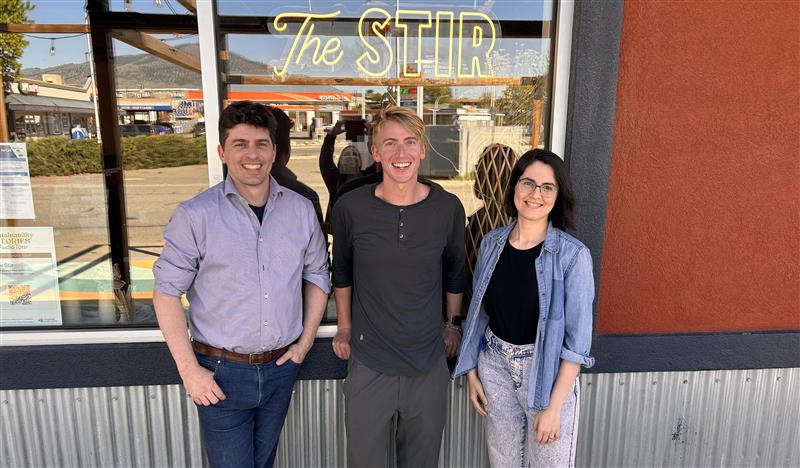
“Our organization wants to help the region build up food production but also increase food security for residents at risk. We envision and work towards a regenerative, sovereign, and just food system for the broader Kamloops and Southern Interior area.”
– Saeideh Hejazi, Co-Executive Director, Kamloops Food Policy Council
This systemic approach to community resilience was also reflected in a climate internship project led by Interior Health. As the Okanagan faces more frequent and severe heat, Interior Health is working steadily to improve its extreme temperature response plans— particularly for vulnerable populations.
“Climate impacts on health are growing in the Okanagan,” says Glory Apantaku, Climate and health scientist at Interior Health, “and it is important to assess and evaluate our approaches to how we respond to emergencies such as heat domes, and how we can continuously improve moving forward.”
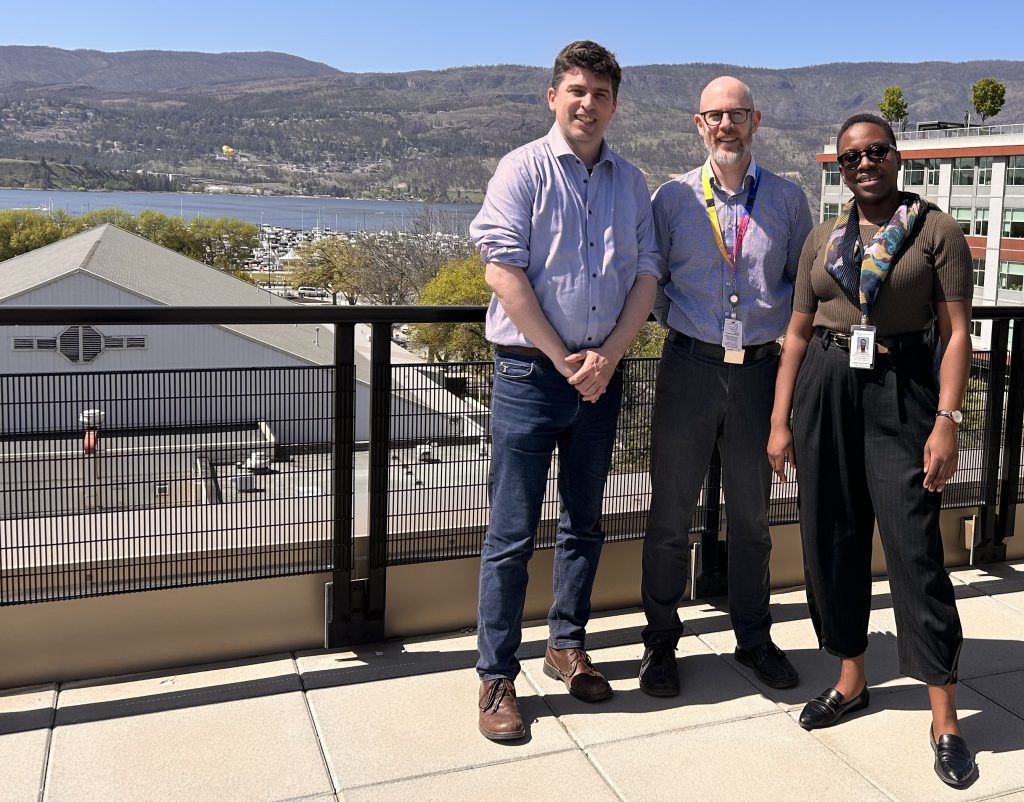
Reflections from the Southern Interior Local Government Association annual conference
To cap off an incredible journey through the Southern Interior, PICS Communication Manager Cindy MacDougall and I attended the Southern Interior Local Government Association (SILGA) conference in Merritt. There, we tended a booth for two days and delivered a climate workshop for elected officials, in partnership with the Community Energy Association.
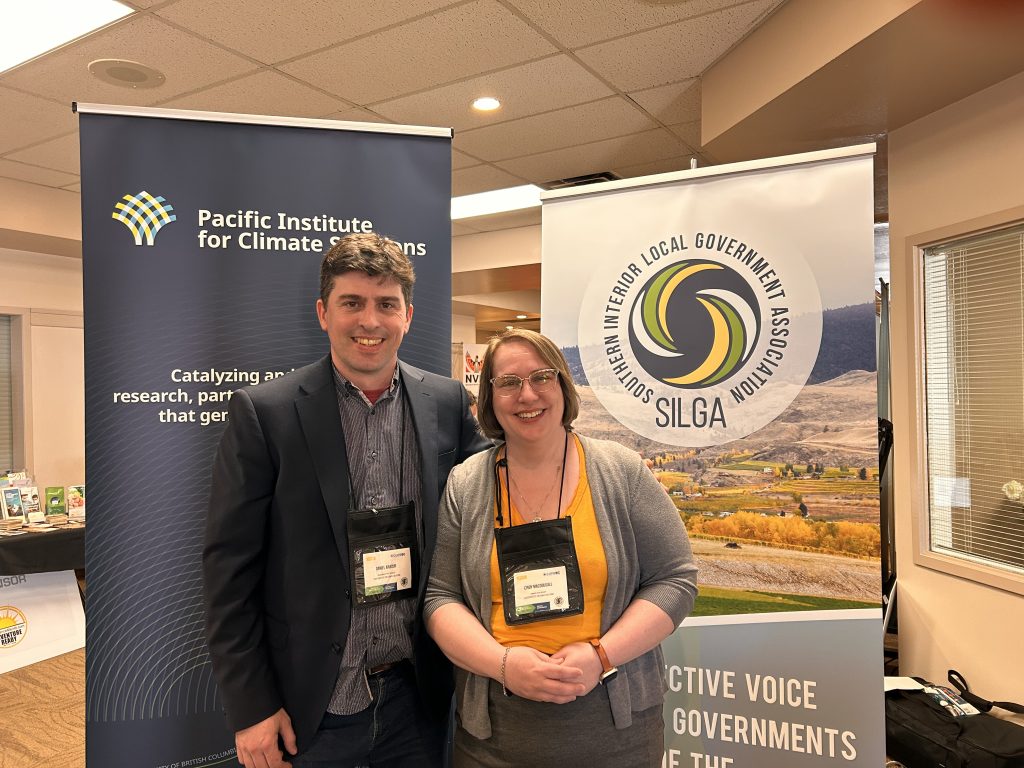
To better understand how elected officials are navigating climate challenges, we asked them to reflect on the top climate action priorities in their communities. Key takeaways from our conversations included:
- Climate denialism and/or conspiracies continue to hamper political momentum in the region, even if elected officials believe most residents support the need for greater climate action.
- There is a pressing need for clearer, region-specific climate data; deeper understanding of the Southern Interior’s economic risks and opportunities; and practical, scalable climate solutions that can grow rather than constrain the local economy.
- Climate action in rural areas and the Interior need to be informed by local priorities, experiences, and knowledges. Too often, provincial policies can be developed without adequate input from those living on the front lines of climate change.
Across the region, I saw the same tensions and hopes reflected in every conversation—from the slow rebuild in Lytton, to the bold vision for community-led green hydrogen in Xaxl’ip, to food security and health system initiatives in Kamloops, X’wisten and the Okanagan. These projects are deeply rooted in place, and together they signal a powerful shift toward transformative locally-led climate resilience.
As the pace and complexity of climate impacts accelerates, the work being done across the Southern Interior reminds us that effective solutions come from the ground up. And just as importantly, they rely on supportive higher-level policies and funding initiatives, as well as a collective willingness to learn from the experiences of places like Lytton to ensure that no community has to face the future alone.
Local voices reflect on lessons from Lytton:
Daniel Arbour is the partnerships and grants specialist with the Pacific Institute for Climate Solutions.
